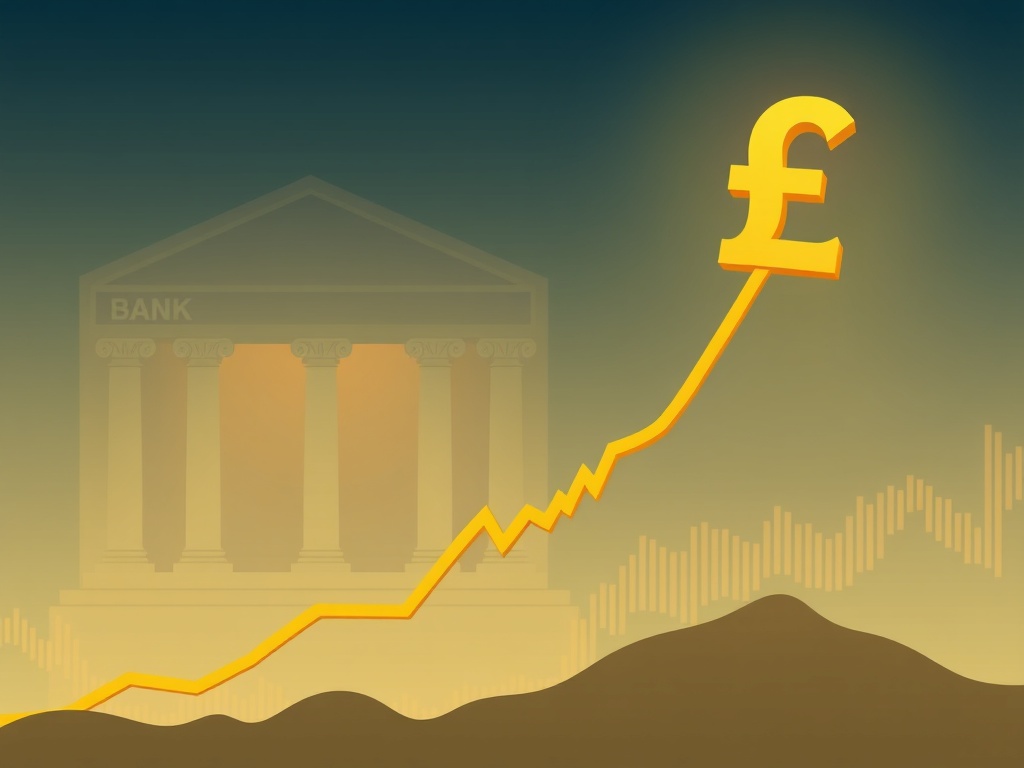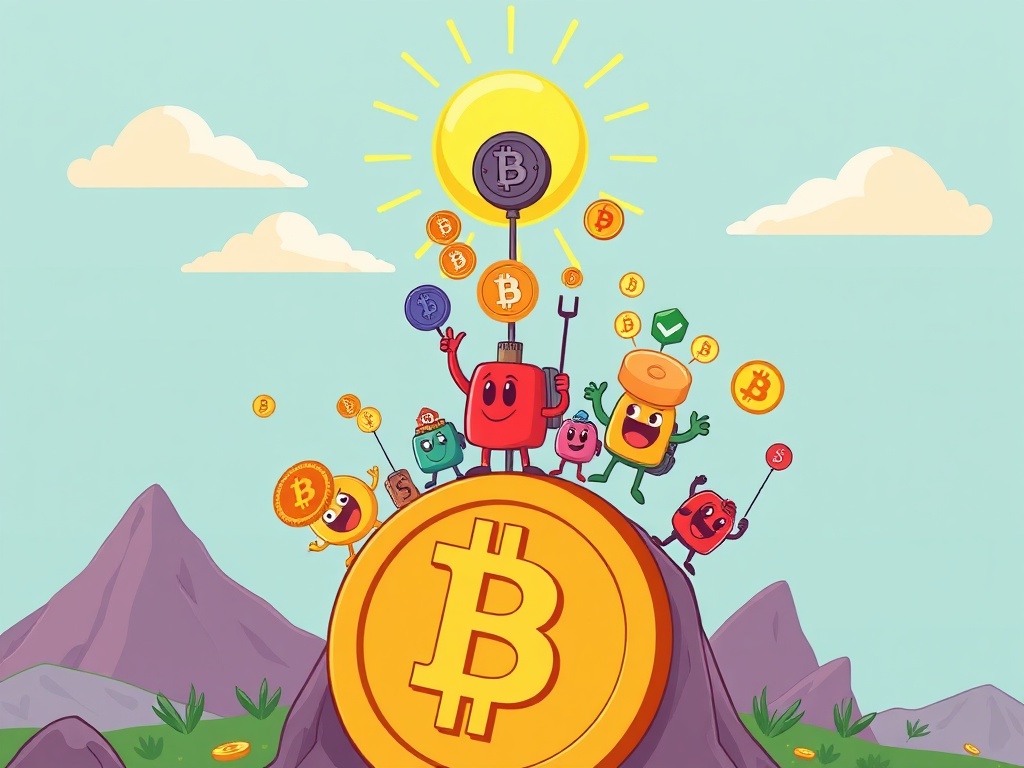BitcoinWorld

GBP Recovery: Unlocking Potential as Deutsche Bank Signals Sterling Rebound
In the dynamic world of financial markets, where volatility is often the only constant, the traditional foreign exchange (forex) market continues to offer compelling narratives. Just as cryptocurrency enthusiasts track digital asset movements, traditional investors keenly observe major currency pairs for signs of shifts. One such significant development comes from Deutsche Bank, which has issued a notable call on the GBP recovery, suggesting that the Pound Sterling might be on the cusp of a significant rebound. This insight emerges at a critical juncture, as data indicates that bearish positions on the GBP have reached their peak, potentially setting the stage for a reversal. What does this mean for traders and investors, and what factors are driving this optimistic outlook?
GBP Recovery: Unpacking Deutsche Bank’s Bullish Stance
Deutsche Bank’s latest assessment paints a picture of optimism for the Pound Sterling, a currency that has faced considerable headwinds over the past year. Their analysis points to a significant turning point for the British currency, suggesting that the worst of its declines may be behind it. This bullish stance is particularly noteworthy because it comes after a period where the Pound was heavily sold off, reflecting widespread concerns about the UK’s economic prospects, inflation, and political stability.
The core of Deutsche Bank’s argument for a GBP recovery rests on the idea that the market has become overly pessimistic. When a currency is widely shorted, meaning a large number of traders are betting on its decline, it creates a crowded trade. If sentiment begins to shift, even slightly, these bearish positions can be quickly unwound, leading to what is known as a ‘short squeeze’ or ‘short covering.’ This process involves traders buying back the currency to close their losing positions, which in turn pushes the price higher. Deutsche Bank believes that the current level of bearishness has reached an extreme, making the Pound ripe for such a reversal.
Key indicators supporting this view include:
- Extreme Positioning: Speculative net short positions on GBP are at or near historical highs, indicating that most of the selling pressure from institutional traders may have already occurred.
- Valuation Discrepancy: Despite recent economic challenges, Deutsche Bank suggests that the Pound Sterling is now undervalued relative to its economic fundamentals, making it an attractive prospect for long-term investors.
- Economic Resilience: While the UK economy faces inflation challenges, signs of resilience in certain sectors, coupled with the Bank of England’s (BoE) hawkish stance, provide a foundation for potential improvement.
Deutsche Bank Forecast: What’s Driving the Optimism?
The detailed Deutsche Bank forecast for the Pound Sterling is not based on mere speculation but on a careful evaluation of macroeconomic factors and market dynamics. Their analysts have identified several key drivers that could fuel the Pound’s resurgence:
1. Bank of England’s Monetary Policy: The Bank of England has been one of the more aggressive central banks in terms of interest rate hikes to combat persistent inflation. While higher rates can initially dampen economic growth, they also make a currency more attractive to foreign investors seeking higher yields. Deutsche Bank anticipates that the BoE’s commitment to tackling inflation will provide underlying support for the Pound, especially if other major central banks begin to slow their tightening cycles.
2. UK Economic Data: Despite concerns about a recession, recent UK economic data has shown pockets of strength. Labor market figures, consumer spending, and certain business surveys have outperformed some pessimistic expectations. If the UK economy avoids a deep recession or shows signs of a quicker recovery than anticipated, it would provide a strong fundamental basis for a stronger Pound. The market often reacts to these data surprises, leading to re-evaluations of a currency’s value.
3. Global Risk Sentiment: The Pound Sterling is often considered a ‘risk-on’ currency, meaning it tends to perform better when global economic sentiment is positive and investors are willing to take on more risk. If global growth prospects improve, or if geopolitical tensions ease, it could lead to increased capital flows into riskier assets, including the GBP. Deutsche Bank’s outlook implicitly factors in a potential improvement in the broader global economic environment.
4. Technical Rebound Potential: From a technical analysis perspective, the Pound has been oversold, hitting multi-year lows against the US Dollar and other major currencies. This oversold condition, combined with the extreme bearish positioning, suggests that a technical rebound is increasingly likely. Chart patterns and momentum indicators often point to a reversal when a trend becomes stretched.
Bearish GBP Positions: The Anatomy of a Market Reversal
Understanding why bearish GBP positions have peaked is crucial to grasping the potential for a reversal. For an extended period, the Pound Sterling was a favorite target for short-sellers due to a confluence of negative factors:
- High Inflation: The UK experienced some of the highest inflation rates among developed economies, eroding purchasing power and raising concerns about living standards.
- Energy Crisis: As a significant energy importer, the UK was particularly vulnerable to soaring global energy prices, impacting households and businesses.
- Political Instability: A period of frequent political changes and policy uncertainty further weighed on investor confidence.
- Brexit Aftermath: Lingering economic adjustments and trade frictions post-Brexit continued to present challenges for the UK economy.
These factors led a large number of hedge funds and institutional investors to accumulate significant short positions against the Pound. However, when these positions become too large, the market becomes vulnerable to a reversal. Imagine a seesaw where too much weight is on one side; even a small shift on the other side can cause a dramatic change. The ‘peak’ in bearish positions signifies that most of the participants who wanted to bet against the Pound have already done so. This leaves fewer new sellers to drive the price down further and a large pool of existing short-sellers who will eventually need to buy back the Pound to close their positions, creating upward pressure.
This phenomenon, often referred to as a ‘crowded short,’ is a classic contrarian indicator in financial markets. When everyone is on one side of the trade, the potential for a sharp reversal increases dramatically, as there are simply not enough new participants to sustain the existing trend.
Navigating Forex Market Trends: Where Does GBP Fit?
The Pound Sterling’s trajectory is not isolated; it is deeply intertwined with broader forex market trends. The strength of the US Dollar, the economic health of the Eurozone, and global risk appetite all play significant roles in how GBP performs. For instance, a strong US Dollar, driven by aggressive Federal Reserve rate hikes, has historically put pressure on other currencies, including the Pound.
Current forex market trends show a complex interplay of forces:
- Dollar Dominance: The US Dollar has been a safe-haven asset and a beneficiary of higher interest rates, often leading to weakness in other major currencies. A softening in the Fed’s stance or a shift in global risk appetite could see the Dollar weaken, providing breathing room for currencies like GBP.
- Eurozone Dynamics: The Euro’s performance is crucial, given the UK’s close trade ties with the Eurozone. While the Eurozone faces its own challenges, any signs of economic improvement or a more hawkish European Central Bank (ECB) could indirectly support the Pound by stabilizing the regional economic outlook.
- Commodity Prices: As an energy importer, the Pound is sensitive to fluctuations in oil and gas prices. Stabilizing or falling commodity prices could ease inflationary pressures and improve the UK’s terms of trade, offering support to the currency.
For traders, understanding these inter-market relationships is vital. A potential GBP recovery could be amplified if the US Dollar begins to weaken or if the global economic outlook improves, encouraging a shift from safe-haven assets to growth-sensitive currencies. Conversely, persistent global headwinds or a resurgence of dollar strength could temper the Pound’s upside potential.
Pound Sterling Outlook: Potential and Pitfalls Ahead
The Pound Sterling outlook, as envisioned by Deutsche Bank, suggests a compelling opportunity, but it is not without its challenges. While the peak in bearish positions provides a strong technical basis for a rebound, several factors could influence the extent and sustainability of this recovery.
Potential Upside Scenarios:
- Inflation Cooling Faster: If UK inflation moderates more rapidly than expected, it could reduce the need for aggressive BoE rate hikes, potentially boosting consumer and business confidence.
- Economic Growth Surprises: Stronger-than-anticipated economic data, particularly in key sectors, would directly support a more positive outlook for the Pound.
- Global Risk-On Shift: A sustained improvement in global economic sentiment and a shift away from safe-haven assets could attract significant capital flows back into the Pound.
- Political Stability: Continued political stability and clear policy direction from the UK government would reassure investors.
Potential Pitfalls and Challenges:
- Persistent Inflation: If inflation remains stubbornly high, forcing the BoE to maintain a very hawkish stance, it could stifle economic growth and limit the Pound’s upside.
- Deeper Recession: A more severe or prolonged economic downturn in the UK than currently anticipated would undermine any recovery efforts.
- Global Economic Slowdown: A significant global recession or renewed geopolitical tensions could trigger a flight to safety, benefiting currencies like the US Dollar at the expense of others.
- Unforeseen Shocks: As always, unforeseen events (e.g., new energy crises, major geopolitical conflicts) could derail positive forecasts.
The outlook for the Pound Sterling is thus a delicate balance between fundamental improvements and external risks. While Deutsche Bank’s call highlights a significant shift in market positioning, investors and traders should remain vigilant and adaptable to evolving market conditions.
Conclusion: A Pivotal Moment for the Pound
Deutsche Bank’s optimistic assessment of a potential GBP recovery marks a pivotal moment for the Pound Sterling. The indication that bearish GBP positions have peaked suggests that much of the downside pressure may have been exhausted, paving the way for a reversal driven by short covering and a reassessment of the UK’s economic fundamentals. This Deutsche Bank forecast, rooted in analysis of monetary policy, economic data, and global forex market trends, offers a compelling counter-narrative to the prevailing pessimism that has gripped the currency.
While the path to a sustained Pound Sterling outlook remains subject to various domestic and international factors, the current market positioning provides a strong technical impetus for an upward move. Investors and traders should closely monitor key economic indicators, central bank communications, and shifts in global sentiment to capitalize on potential opportunities. The next few months will be crucial in determining whether the Pound can indeed unlock its recovery potential and regain lost ground in the global currency arena.
To learn more about the latest Forex market trends, explore our article on key developments shaping Pound Sterling liquidity and institutional adoption.
This post GBP Recovery: Unlocking Potential as Deutsche Bank Signals Sterling Rebound first appeared on BitcoinWorld and is written by Editorial Team





